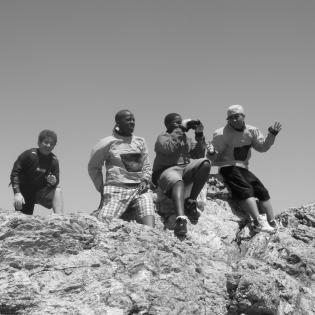Models of Mastery (Private-Religious)
The most important role models for learners demonstrate how one can live responsibly in our world while achieving success by contemporary measure. The great gift and challenge of Judaism is to bring holiness to the profane- to the worldly. The models offered in this lesson are successful in this world and they act as well as give voice to the ideal of caring and sharing our personal gifts and bounty.
The learner will:
- identify the qualities of a successful person by worldly standards.
- utilize Biblical texts to identify G-dly qualities and values that define the ethical mastery of the world.
- relate the success of historic and contemporary Jewish figures.
- utilize Biblical texts and historic as well as contemporary Jewish figures to personally identify and define success.
- A collection of articles and/or magazines that feature stories of admired/popular contemporary figures
- A display board or large sheets of poster paper
- Attachment One: Portrait of a Master
- Computers with Internet access and resources Attachment Two: Internet Resources: Aaron Feuerstein and Malden Mills or articles downloaded from these or related sites.
- Attachment Three: Doing Well and Doing Good
- Attachment Four: Portrait of a Modern Master
Internet Resources: Aaron Feuerstein and Malden
The Mensch of Malden Mills
http://www.CBSnews.com/stories/
2003/07/03/60minutes/main561656.shtml .
Ethics is the bottom line; To Aaron Feuerstein, good Judaism makes good business sense.
https://www.jewishaz.com/jewishnews/970131/ethics.html
A CEO Who Lives by What’s Right.
https://torah.org/features/firstperson/ceo.html
Malden Mills: A Study in Leadership: The role of conviction, communication and courage in corporate leadership.
https://www.opi-inc.com/malden.htm
Instructions
Anticipatory Set:As the learners enter the room, assign them a number beginning with one (#1) and hand them articles/magazines featuring contemporary “icons”- admired as successful people in today’s world. Announce the paring of numbers and have the learners locate their partner (i.e. 1 and 3; 2 and 4; 5 and 7; 6 and 8, etc.). In their groupstell the learners to look through their materials and identify someone they believe is admired as successful in today’s world-- it need not reflect their personal point of view. Ask them to determine what qualities their identified “icon” possesses that might account for the reason they are admired as being successful- What is it that makes these individuals popular/successful? Tell them to record these “admirable qualities” on the display board or poster paper. Once all groups have had a chance to record their identified “admirable qualities”, take some time to identify commonly referred to qualities and allow for discussion.
Distribute to each group a copy of Attachment One: Portrait of a Master and have each group read and respond to the questions.
Lead a discussion centered on the learner responses to the questions related to the text and have the learners draw some comparative conclusions.
Write the words well and good on the display board. Challenge the learners to consider the difference between these words. Teacher Note: It might help to stimulate thinking if you posed this question, “What difference, if any, would there be between these two comments. ‘He is doing well’ and “He is doing good.’?” Doing “well” is often regarded as being influential, having economic impact and financial resources. Doing “good” is often regarded as making a positive contribution to improving the welfare of others.
Distribute a copy of the Attachment Two: Internet Resources: Aaron Feuerstein and Malden Mills to each learner and have them, individually, select and read about Aaron Feuerstein or Malden Mills utilizing the citations listed on the handout (or printouts of these materials) to gather information.
Assign the completion of Attachment Three: Doing Well and Doing Good as a response to their reading/research. Lead the learners in a discussion that gives information about each of these men and makes comparisons of their decision-making models.Teacher Note: Aaron Feuerstein and Malden Mills both offer a decision-making model that demonstrates how one can succeed at doing “well” while also showing concern for the common “good” and applying the teachings of Jewish tradition to the exercise of leadership.
Conclude this lesson by distributing copies of the Attachment Four: Portrait of a Modern Master and instruct the learners to read this article and respond in writing to this reflection question, “Taking into consideration all that they learned and discussed in this lesson(s), I define success as…”
Learners will be assessed based on their group discussions and small group work, their research readings as well as the seriousness and depth of understanding reflected in their response to the lesson concluding prompt, “Taking into consideration all that they learned and discussed in this lesson(s), I define success as…”
Philanthropy Framework
-
Strand PHIL.II Philanthropy and Civil Society
-
Standard PCS 05. Philanthropy and Government
-
Benchmark MS.3 Identify the relationship between individual rights and community responsibilities.
-
-
-
Strand PHIL.III Philanthropy and the Individual
-
Standard PI 01. Reasons for Individual Philanthropy
-
Benchmark MS.2 Explain and give examples of enlightened self-interest, egoism, and altruism as they relate to philanthropy.
-
Benchmark MS.3 Identify and give examples of stewardship in cultural traditions around the world.
-
Benchmark MS.5 Describe the responsibility students have to act in the civil society sector to improve the common good.
-
-
